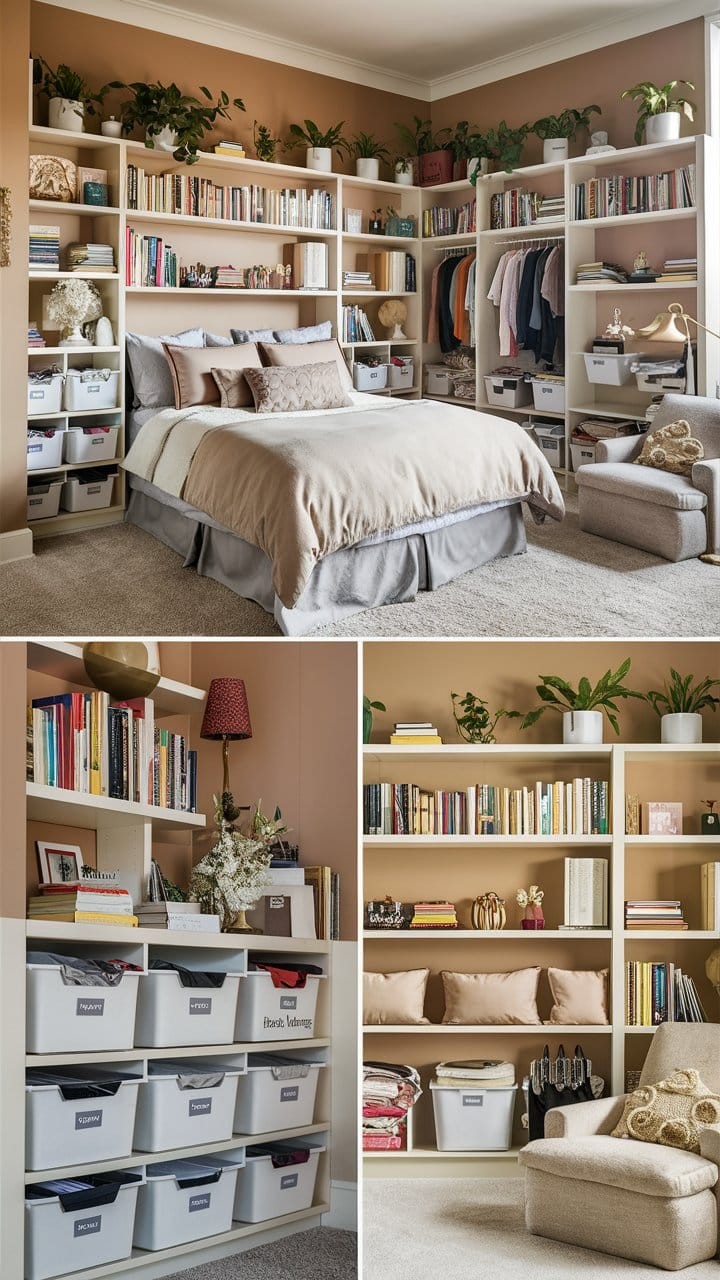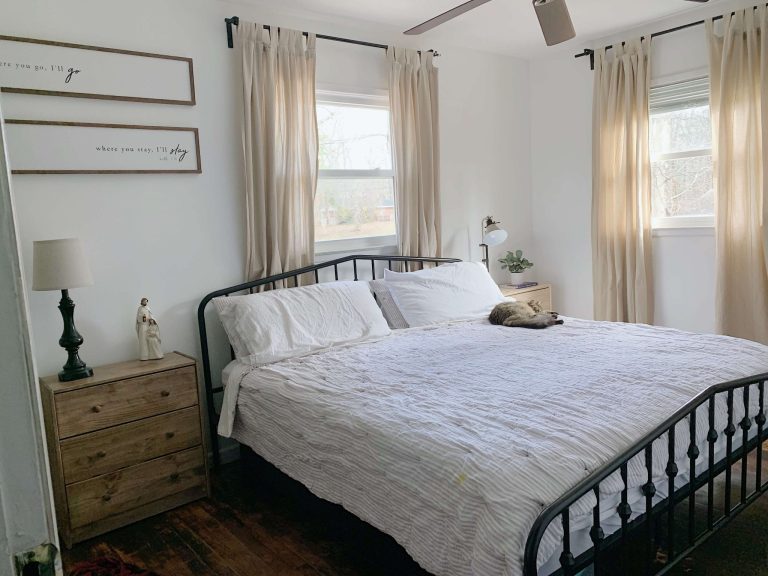The Worst Place To Position Your Bed! Avoid These Bed Placement Blunders
If you’re finding yourself lying awake at night, struggling to get a good night’s rest despite your best efforts, it’s possible that your bedroom setup is playing a significant role. A crucial factor in achieving quality sleep is the placement of your bed. The position of your bed can have a profound impact on both the quantity and quality of your sleep. But what are the common mistakes people make when placing their beds, and how can you avoid them to start sleeping better tonight?
Worst Place to Position Your Bed

As you strive to turn your bedroom into a serene retreat where you can recharge and rejuvenate, it’s essential to consider the positioning of your bed. A well-placed bed can make all the difference in creating an ideal sleep environment that fosters restful nights and refreshing mornings. Conversely, placing it in certain areas can disrupt your sleep patterns and overall well-being. Here are six common mistakes to avoid when deciding where to position your bed.
Directly Across From the Door
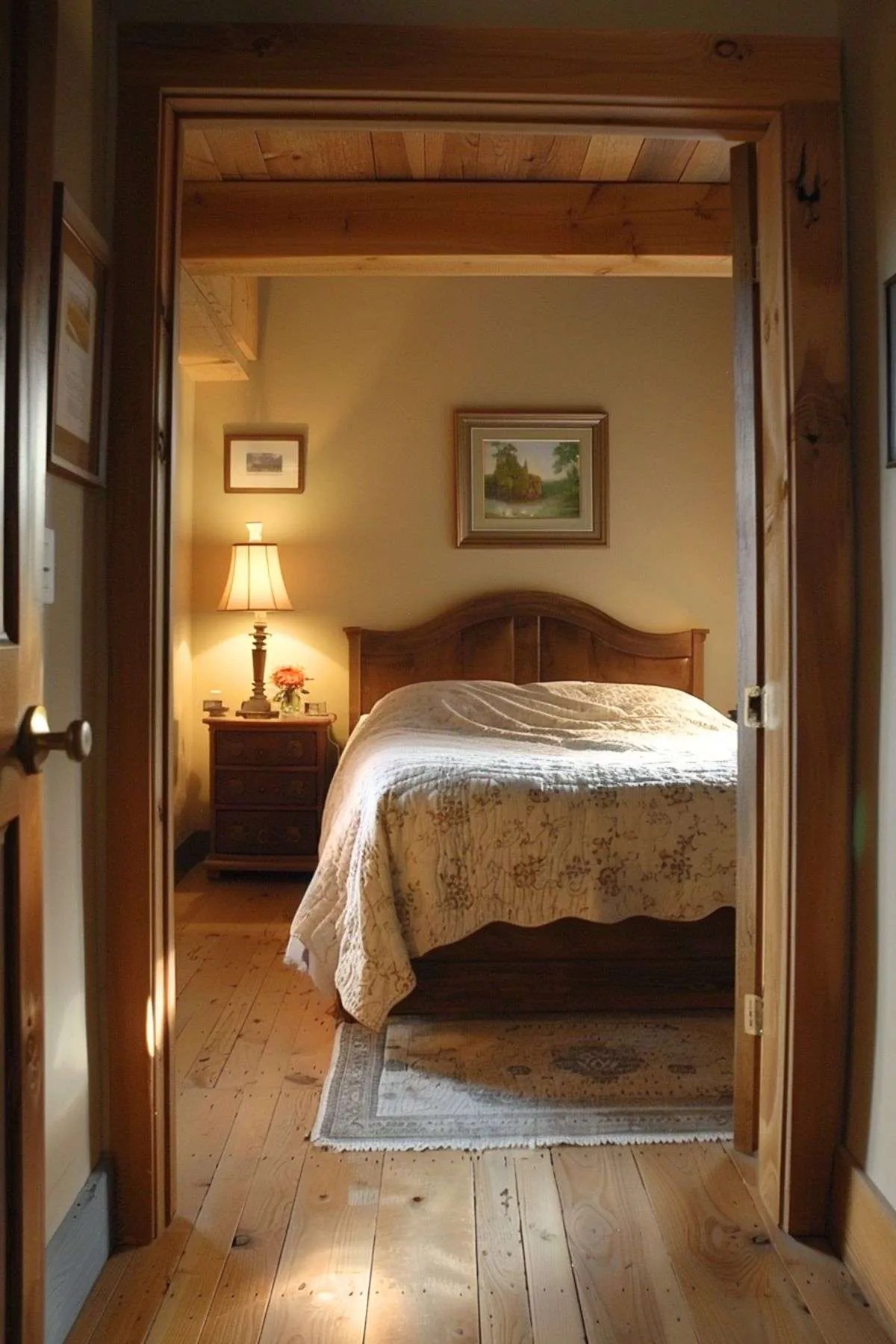
In Feng Shui philosophy, positioning your bed in the ‘coffin position’ is considered one of the worst configurations. This setup involves placing your bed directly across from the door, with your feet pointing straight at the entrance when lying down. According to Feng Shui principles, this alignment is believed to generate negative energy flow, disrupt sleep patterns, and inadvertently invite unwanted energies into your life.
The subconscious mind remains vigilant in this position, making it difficult to relax and leading to feelings of exposure, vulnerability, and restlessness. It’s thought that sleeping in the ‘coffin position’ can result in disrupted slumber, unease, and a lack of rejuvenation during sleep. To foster a sense of security and tranquility, it’s recommended to place your bed at an angle or offset from the door, rather than directly in its line of sight.
Against the Window
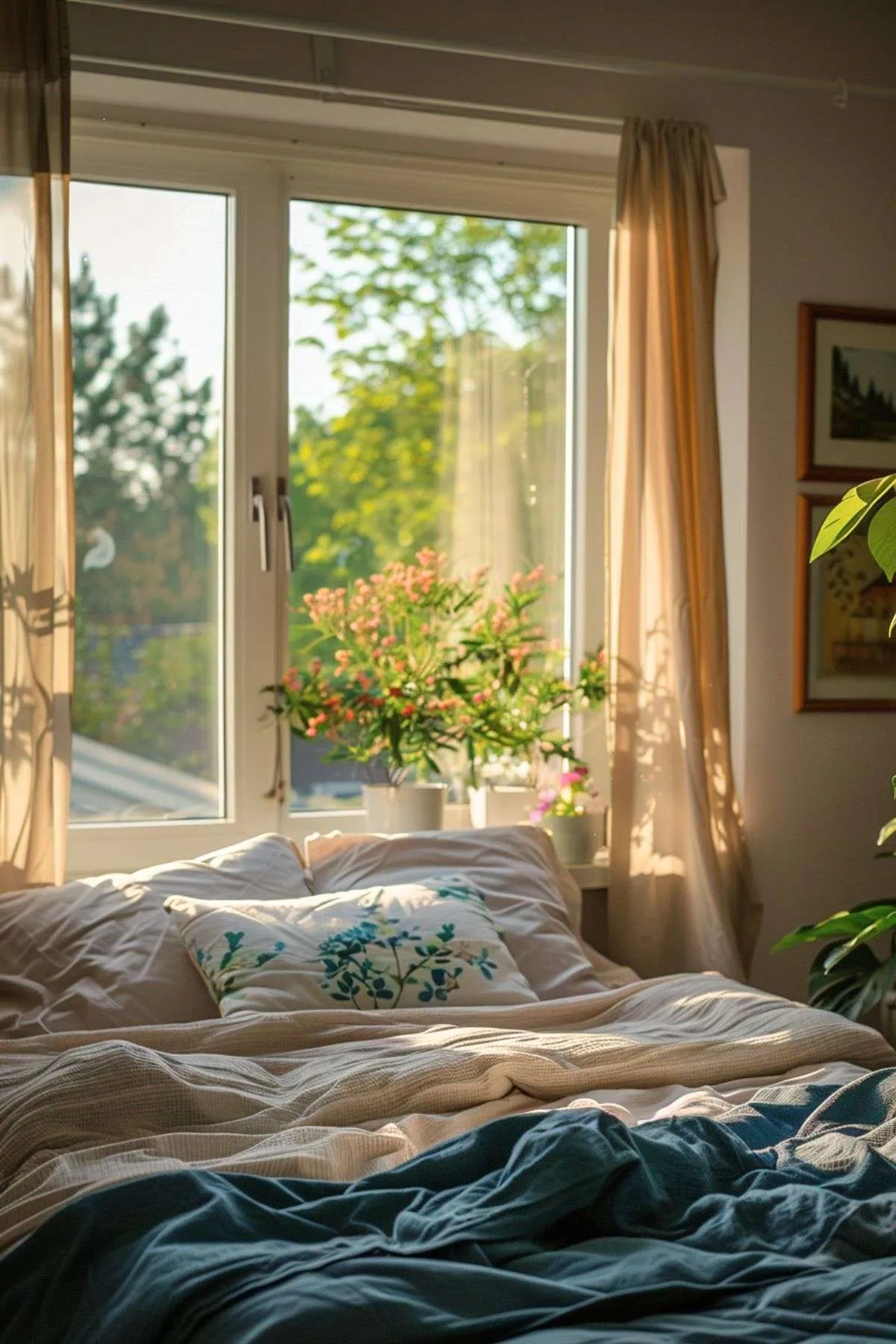
While placing a bed near a window might seem like a convenient way to maximize space or create a cozy ambiance, it’s essential to consider the potential drawbacks. Allowing natural light into the room can be beneficial for some people, but it can also disrupt your sleep cycle by introducing unwanted noise and drafts. Furthermore, the lack of proper insulation between the bed and window can make your sleeping area uncomfortably chilly during winter months.
To prioritize a restful night’s sleep, it’s recommended to keep your bed away from windows and invest in heavy curtains or blinds that effectively block out light and sound.
Under a Sloped Ceiling
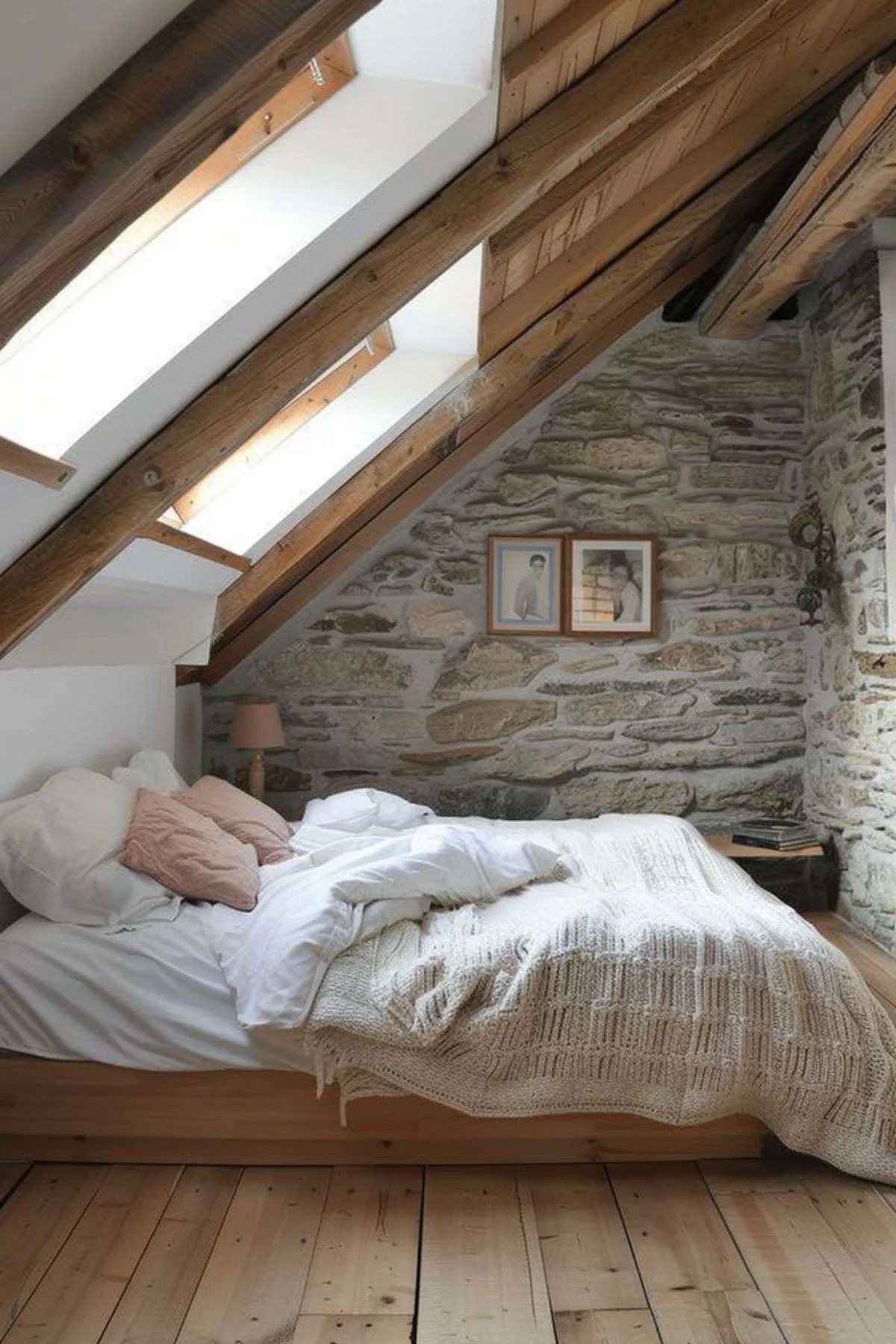
While a sloping ceiling can add to the coziness of a room, it can also contribute to a cramped and claustrophobic sleeping environment. The low clearance can make it difficult to move around freely, potentially leading to feelings of confinement and discomfort. To promote relaxation and sleep quality, consider placing your bed at an angle that minimizes the impact of the sloped ceiling.
This small adjustment can work wonders in creating a more open and airy atmosphere that invites restful slumber.
Next to Electrical Outlets
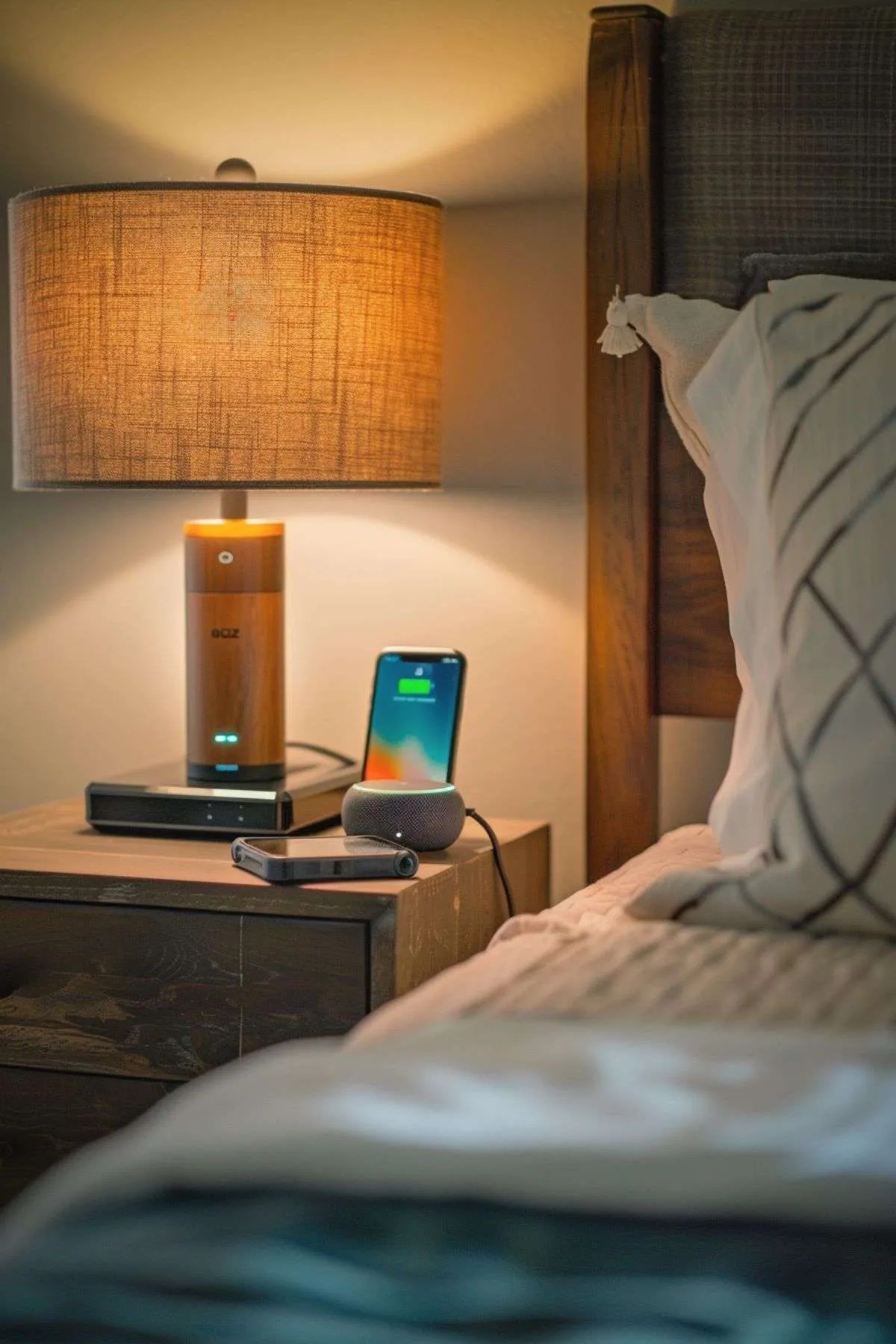
Electromagnetic fields (EMFs) emitted by electrical outlets have raised concerns about their impact on sleep patterns. Research suggests that these fields may contribute to restlessness and insomnia. When it comes to setting up your bed, proximity to EMF sources is crucial. A large extension plug or USB outlet right next to your bed can amplify exposure levels, potentially disrupting your sleep and overall well-being.
To safeguard against this, keep a safe distance between your bed and electrical outlets. Additionally, consider unplugging electronic devices before bedtime to further minimize your exposure to electromagnetic radiation.
Beneath Overhead Beams
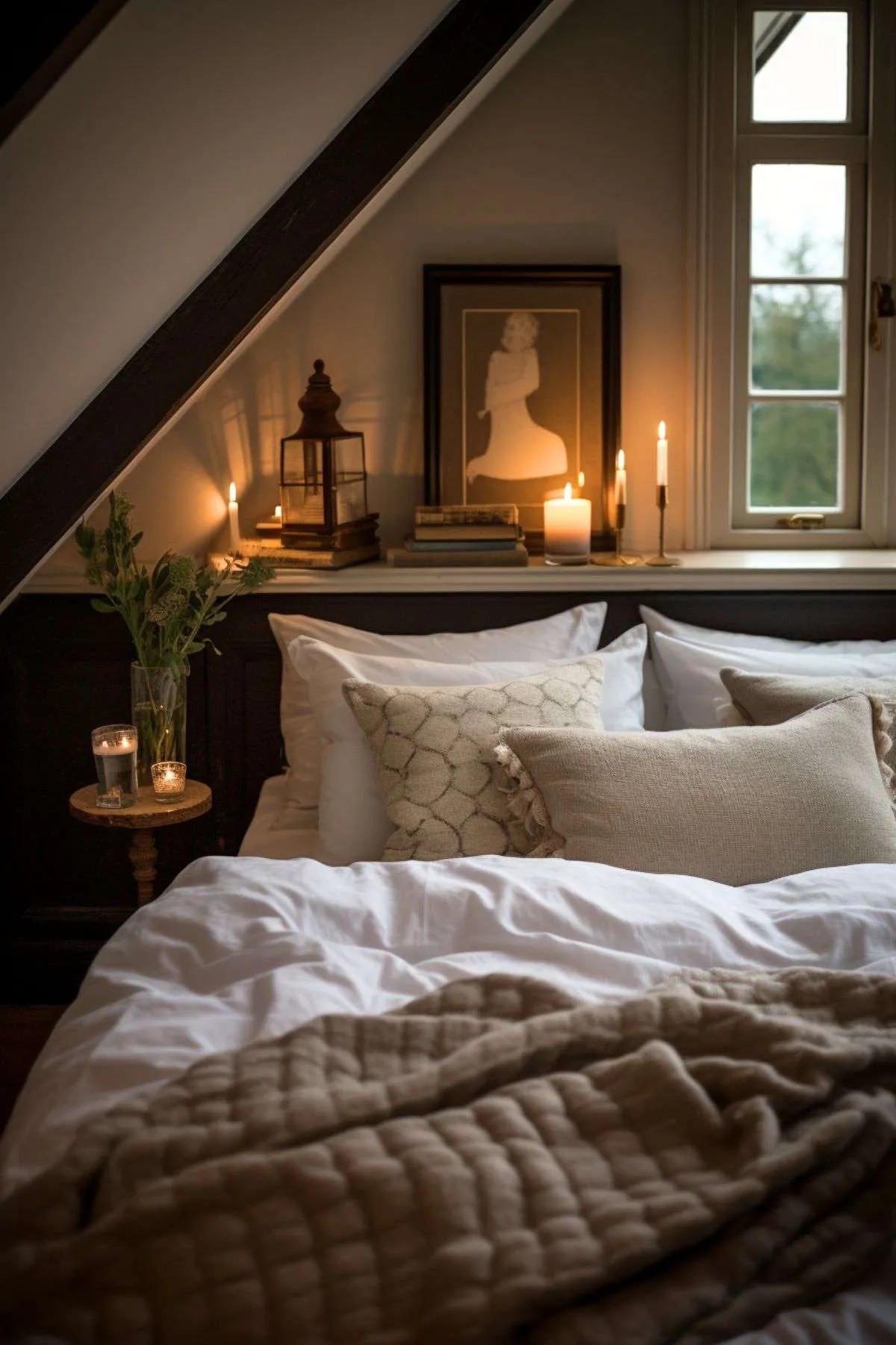
While sleeping beneath overhead beams may add a touch of rustic charm to your bedroom, it can also contribute to a sense of heaviness and unease. The physical presence of these beams can create a palpable feeling of pressure and constraint, making it challenging to truly relax and unwind. If your bed is situated in this way, consider adjusting its position to alleviate the psychological discomfort and foster a more tranquil sleep environment.
In a High-Traffic Area

For a good night’s sleep, it’s essential to create a serene atmosphere in your bedroom. One way to achieve this is by positioning your bed away from high-traffic areas. This could mean placing it next to an en-suite door or walk-in closet, rather than directly in the path of daily comings and goings. Additionally, consider investing in soundproofing solutions to block out any external noise that might disrupt your rest.
By doing so, you’ll be better equipped to get the deep and restorative sleep you need, undisturbed by the constant flow of activity around you.
Best Sleeping Direction as per Vastu
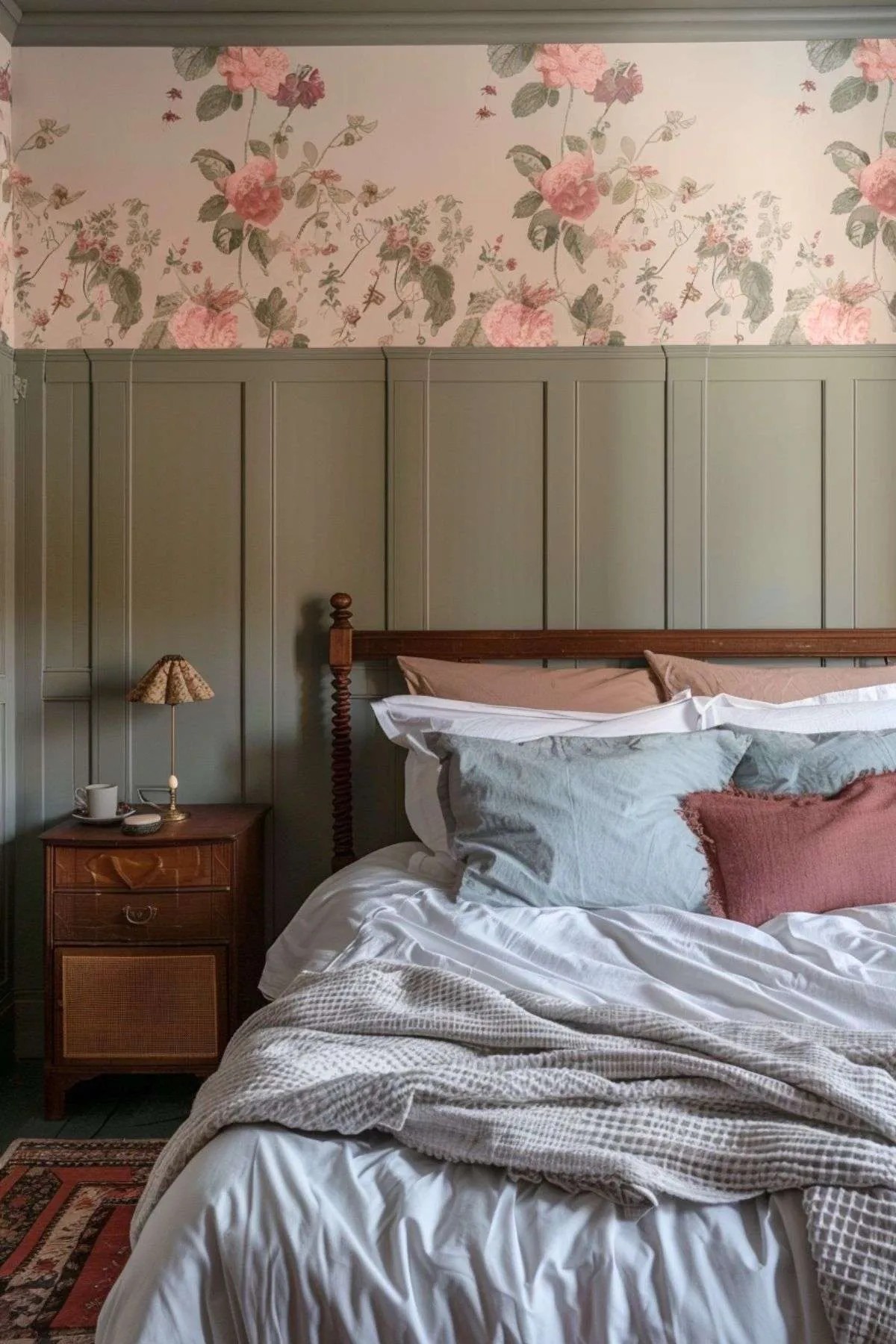


Vastu Shastra, an ancient Indian science of architecture and design, has been guiding people in creating harmonious living spaces for thousands of years. The term ‘Vastu’ refers to dwelling or building, while ‘Shastra’ signifies principles or guidelines. The primary objective of Vastu Shastra is to synchronize our living spaces with the natural elements and cosmic energies, fostering balance and harmony. This ancient wisdom offers insights into optimizing bed placement for a restful sleep.
In Vastu Shastra, the south or east direction is considered auspicious for placing your bed. According to Vastu principles, sleeping with your head towards the south and feet pointing north, or vice versa, is believed to align your body with the magnetic field of the earth, promoting physical well-being, mental clarity, and overall rejuvenation. This orientation is thought to enhance energy levels and positivity, allowing you to wake up feeling refreshed.
Alternatively, sleeping with your head towards the east and feet pointing west is also considered favorable in Vastu Shastra. This alignment is believed to harness the positive energies of the rising sun, promoting vitality, positivity, and spiritual growth. It is thought to enhance creativity, intuition, and emotional balance, leading to a more harmonious life.
By incorporating Vastu principles into your bedroom layout, you can create a conducive sleeping environment that promotes overall well-being. It’s essential to avoid placing your bed in direct alignment with sharp corners, beams, or obstructive objects, as these may disrupt negative energy flow and impact sleep quality. By taking advice from both Feng Shui and Vastu Shastra principles, you can optimize your sleep quality and wake up feeling refreshed and rejuvenated each morning.
Take the time to evaluate your bedroom layout and make necessary adjustments to ensure that your bed is positioned for optimal sleep health. Your body and mind will thank you.

